Do you have diastasis recti and looking for a safe exercise program that you can do?
You are in the right place!
In this post, you’re going to learn:
- If diastasis recti can be fixed with exercise,
- How long it takes, and
- Gentle exercises you can include in your program.
I will also share an exclusive Diastasis Recti Exercise Program designed to help you rebuild and strengthen your core and pelvic floor muscles.
Ready?
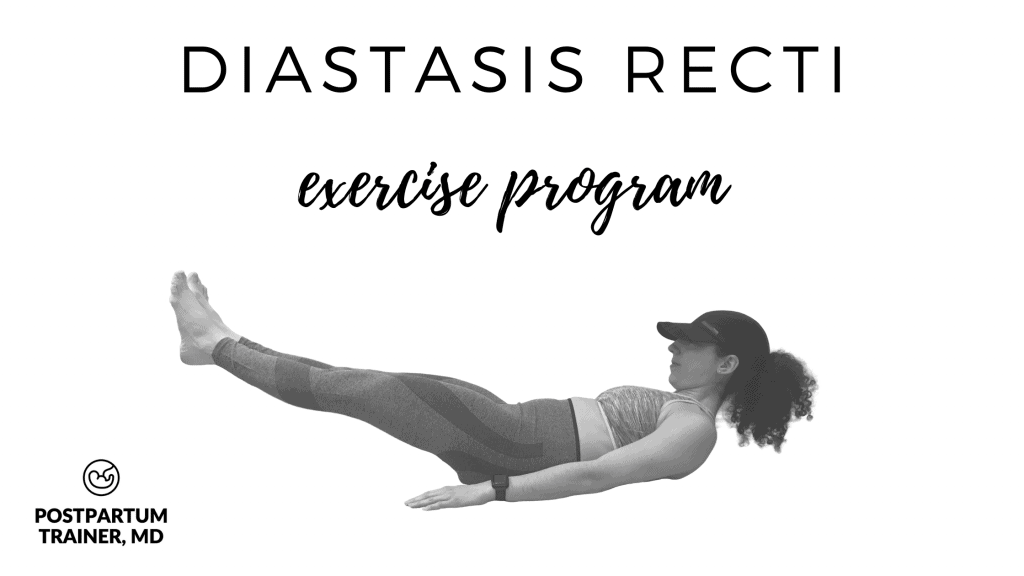
Can Diastasis Recti be fixed with exercise?
Based on the scientific literature published thus far, exercise may help heal diastasis recti.
The majority of studies found benefits from exercising, but some studies did not.
With that said, there is very little downside in trying it for yourself, as it is important to rebuild your core strength either way.
However, if you are newly postpartum, you must receive clearance from your OBGYN prior to starting any sort of exercise program to fix your diastasis.
How long does it take to correct Diastasis Recti with exercise?
From what has been published, postpartum women can see improvements in diastasis recti in as little as 8 weeks, while others can take as long as 6 months or more.
How fast you see improvements likely depends on how “severe” your abdominal muscle separation is.
What is considered severe?
Although there are no exact guidelines on what is considered severe diastasis recti, many experts agree that if you can fit 3 or 4 fingers into your abdominal separation, you most likely have a severe form.
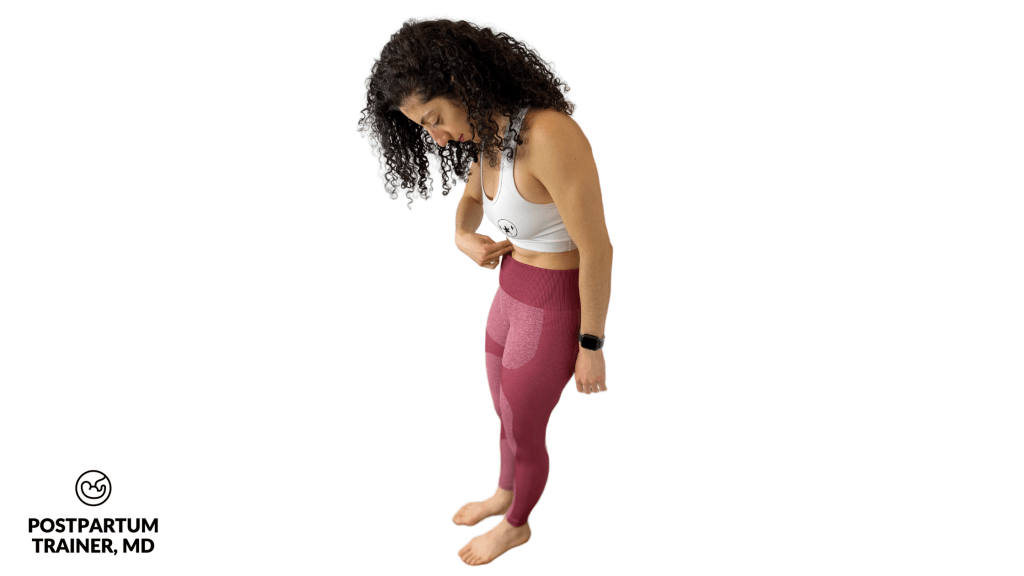
The most important factor
Another factor that will determine how soon you might be able to fix your diastasis recti with exercise is how consistent you are.
In fitness consistency and patience is key.
Expect for it to take at least 6 months to improve significantly.
But remember this is an average!
You may heal sooner – or you may need more time.
Everyone’s situation is different, so please don’t compare yourself to others.
If you have a severe form of diastasis recti, it could take up to 12 months to completely heal.
Can It be Fixed Years later?
It is possible to improve your abdominal wall separation years after it happens.
As with all things fitness-related, it is never too late to start!
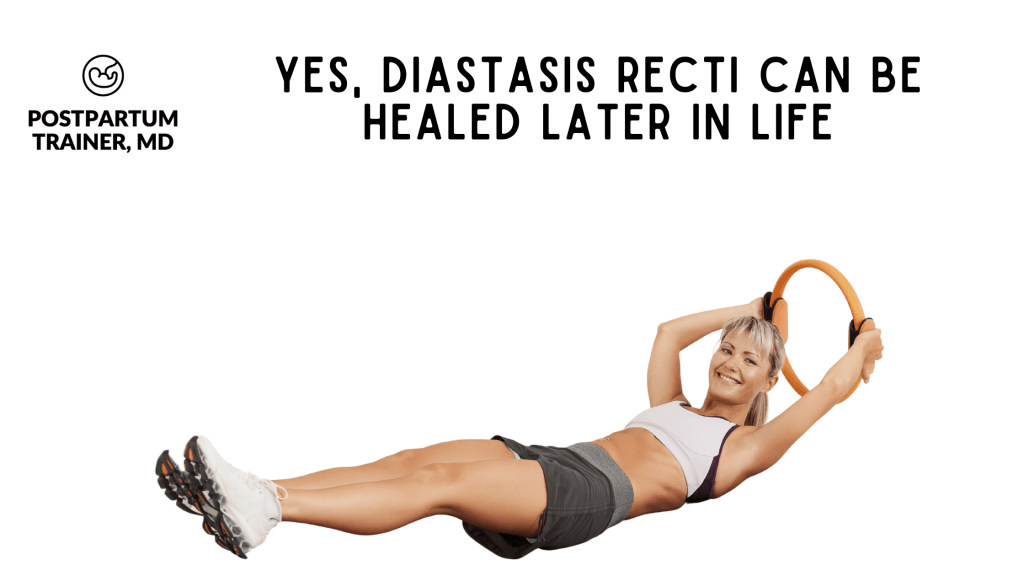
Strengthening your core and pelvic floor will always be beneficial, no matter how old you are!
Just remember to start low and work your way up slowly!
Okay, now let’s go over the exercises.
What exercises can I do with Diastasis Recti?
Your diastasis recti workout should focus on core exercises that:
- strengthen the deep core transverse abdominis muscle (TVA) first
- strengthen the obliques second, and
- strengthen the rectus abdominis last
The transverse abdominis muscles are the ab muscles that wrap around your entire abdomen like a corset.
They should be trained first, as these are the muscles that teach you the proper technique for abdominal bracing.
Training the rectus abdominis directly can actually worsen your diastasis recti postpartum.
Lastly, if any of the following exercises cause pain or discomfort, or worsens your abdominal separation you should stop doing that exercise.
Got it?
Okay good.
So the first exercise for strengthening the deep abdominal muscles is the…
Posterior pelvic tilts
The posterior pelvic tilt is probably the most important movement to learn when starting your exercise program.
They will activate the deep core muscle, improve your posture, and your pelvic floor muscle control.
It can even help prevent lower back pain!
The key is that you want to try and flatten your low back against the ground by pushing your belly button down into the ground!
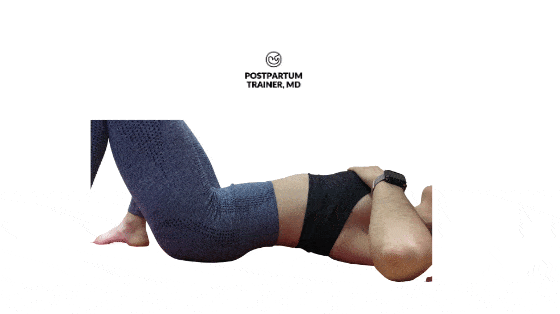
Hold the contraction for 3-5 seconds and release.
Diaphragmatic breathing
Deep diaphragmatic breathing is another fundamental exercise that helps to activate your deep core muscles.
It is also an effective way to train your diaphragm muscle, which is important for learning how to breathe properly.
Inhale nice and slowly (5 count) by focusing on expanding your belly as much as you can. Hold it for a 1 count and then exhale slowly for a 5 count.

Do your best to not let your shoulders move in this exercise.
Cat to Cow
The cat to cow helps to activate the core from a safe position while improving spinal mobility.
It also incorporates the posterior pelvic tilt from a quadruped position.
Make sure to do this exercise nice and slowly and feel your core activating in the cat position to reap all the benefits.
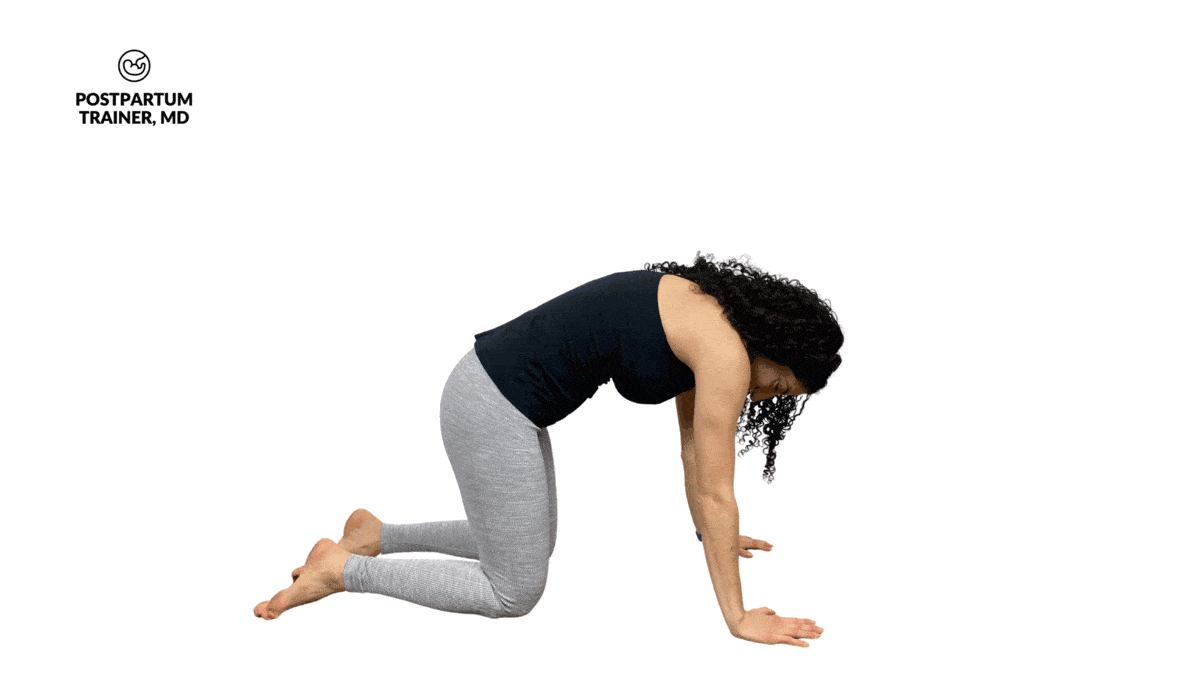
For more ways to strengthen your transverse abdominis muscles, click here.
The next core muscle group you should train are the obliques.
The obliques are the muscles on the side of your abdomen that are usually covered by “love handles.”
To strengthen these muscles and get rid of your love handles I recommend you start with the following exercises.
Waiter Carry
The waiter carry helps to stabilize the core while challenging you not to rotate or flex your midsection.
By holding a lightweight overhead- it presents an uneven load to your core, strengthening the obliques safely.
All you have to do is walk for ~20 seconds.
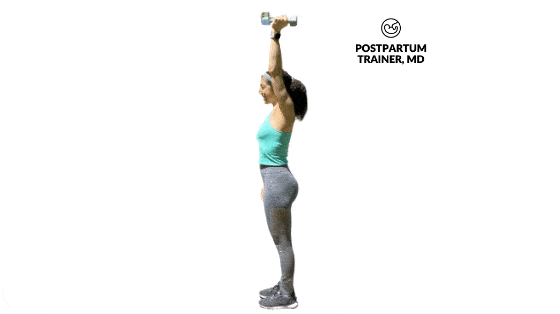
Make sure you train both sides of your body equally.
Half-Kneeling Lift and Chop
The half-kneeling lift and chop is another core stabilization exercise that will challenge your oblique muscles from a safe position.
Simply bring a light weight object from the knee, that is on the floor, up and over to your opposite shoulder.
Again, make sure to train both sides of your body equally.
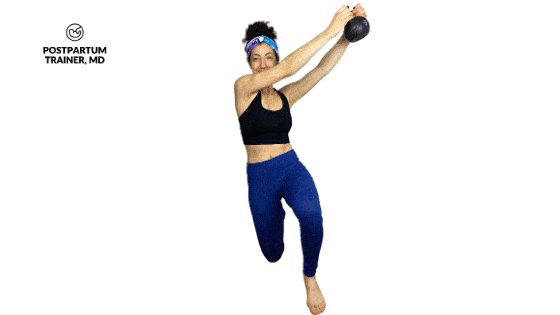
Modified Side Plank
Modified side planks are one of the best ways to target your obliques with just your body weight.
All you have to do is hold this position for time.
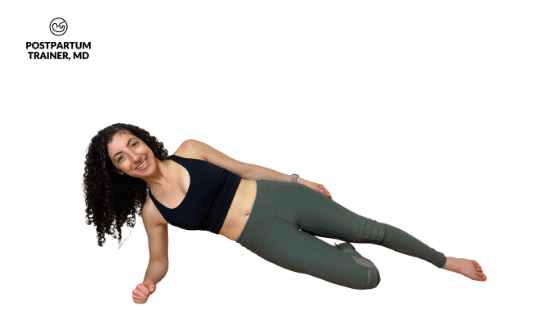
Make sure to keep your core engaged, and your butt muscles squeezed.
For a more complete list of exercises to train your obliques, click here.
Lastly, after you have trained the transverse abdominis and oblique muscle groups, you are ready to train your rectus abdominis.
The rectus abdominis are known as the “6 pack” muscles- the ones that are readily visible when looking at someones midsection.
To strengthen the rectus abdominis muscles you can start with the following exercises:
Wall Mountain Climbers
The wall mountain climber is a great introductory exercise for training the rectus abdominis muscle.
Do your best to keep your core, pelvic floor, and glutes engaged while maintaining a neutral spine.
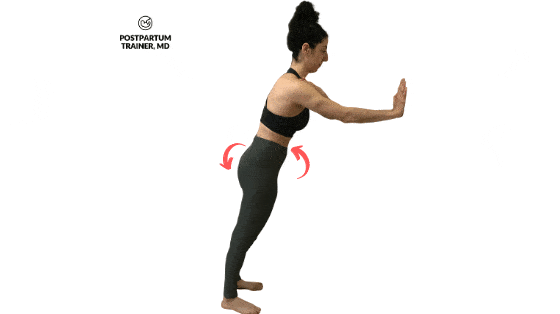
The Seated In and Out (1 Leg)
The seated in and outs is a scaled-back version of the regular in and out that allows you to train your abs safely.
Keep your legs extended out in front of you and only bring one leg up at a time.
To make the exercise easier you can slide your hands back, further behind you.

Lying knee drop
Lying knee drops are a really fun exercise to train the lower part of the 6 pack.
The starting position is with your knees up close to your chest. Make sure to maintain a posterior pelvic tilt the entire time!
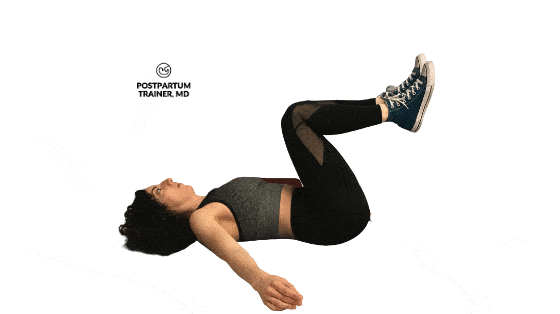
So there you have 9 exercises to start rebuilding your core in a systematic way.
Now let’s put it together into a program you can do from home!
The Diastasis Recti Exercise Program
Here is a safe diastasis recti exercise routine that you can use three days a week.
Alternate between Workout A and Workout B with at least one day off between the two workouts.
Workout 1
| Exercise | Sets | Reps |
|---|---|---|
| Diaphragmatic Breathing | 4 | 5 |
| Posterior Pelvic Tilts | 3 | 12 |
| Modified Side Plank | 3 | 15 sec |
Workout 2
| Exercise | Sets | Reps |
|---|---|---|
| Cat Cow | 4 | 8 |
| Waiter Carry | 3 | 20 sec |
| Wall Mountain Climber | 3 | 10 |
Every 3-4 weeks, change up the exercises to get a new stimulus.
The good news is: I have created a comprehensive post on 100 Abdominal Exercises For Diastasis Recti: The Complete List.
It includes 100 safe exercises you could perform at home with minimal equipment to help strengthen and rebuild your core if you have diastasis recti.
You do not need any experience, in fact all beginners are welcome.
You will start with level 1 and progress through level 4.
You could also get the PDF which includes a complete 6 -18 week exercise program!
Diastasis Recti Exercises Program PDF
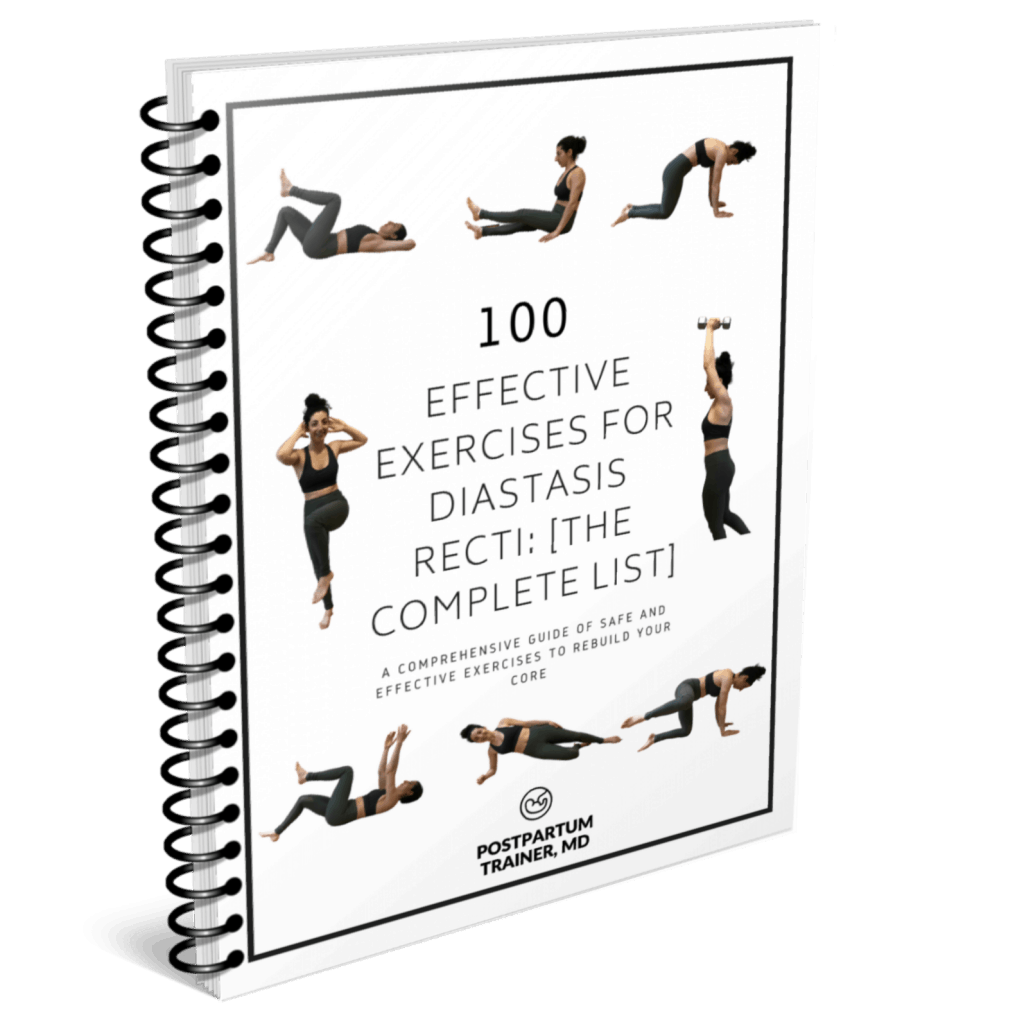
*As always, be sure to use good form and obtain clearance from your medical provider before doing any exercise program.*
Or, if you are looking for a simpler workout, check out my Top 5 Diastasis Recti Breathing Exercises you can do at home.
Other Related Questions
What exercises should be avoided with Diastasis Recti?
When starting out, you should avoid any traditional “abdominal exercise” as these place a lot of stress on the connective tissue of your abdominal wall.
This includes:
- sit-ups
- crunches,
- twisting exercises,
- full push-ups, and
- full planks.
All of these exercises place a great deal of stress on the linea alba – the connective tissue holding the abdominal musculature together.

Listen to your body. If something does not feel right, don’t do it.
Can I lift weights with Diastasis Recti?
I suggest that you first start with a dedicated workout plan to rebuild the strength of your core muscles and pelvic floor before lifting weights.
It is best to seek guidance from a physical therapist / healthcare professional before attempting weights.
For example, you might do
- core work and pelvic floor work for at least 6 weeks
- bodyweight exercises for at least 6 weeks,
- and then gentle weight exercises for at least 6 weeks
Lifting weights too soon can worsen your diastasis due to increased intra abdominal pressure and increase your risk of pelvic floor dysfunction.
Can I Fix Diastasis Recti naturally?
There is some evidence that diastasis recti can heal on its own.
In fact, one study found that half of postpartum women had resolution of their diastasis by 6 months postpartum.
With that said, it is still a good idea to strengthen your core after delivery- as these muscles get stretched and weakened throughout your pregnancy.
Can I fix Diastasis Recti without surgery?
In the most severe cases, fat loss and exercise may not be enough to combat a large abdominal separation.
If you have waited at least 6-12 months with no improvement, be sure to speak to your doctor for further guidance.
Does belly binding help with Diastasis Recti?
A belly band could potentially help improve your ab separation, but it’s important that you don’t rely on it at all times.
The band will physically bring your muscles closer together, but it may not actually lead to lasting changes.
That is why you want to strengthen your transverse abdominis muscles manually, and supplement with a belly band as needed to help you walk around throughout the day.
Final Words on Healing Diastasis Recti
Exercise is a great first-line treatment to strengthen a weak core and help close your abdominal wall separation.
Be consistent, remain patient and remember everyone’s situation is unique.
Also, be sure to check out my free PDF of the best therapeutic exercises for new moms!
Now I want to hear from you.
Did exercise help you fix your diastasis recti?
Related Posts:
- How To Tell If You Have Diastasis Recti (in 5 minutes)
- How Long Does It Take To Heal Abdominal Wall Separation
- 100 Effective Ab Exercises For Diastasis Recti
- Cardio With Diastasis Recti: What Is Safe?
Get Four Free Workouts To Help Strengthen Your Pelvic Floor & Heal Your Mommy Tummy!

Brittany Robles, MD, MPH, CPT
Brittany Robles is a full-time OBGYN physician, a NASM certified trainer, and a prenatal and postnatal fitness specialist. She holds a Master of Public Health degree in maternal health with a special interest in exercise and nutrition. She is also the co-author of The White Coat Trainer. Learn more about her here.
Sharing is Caring – Send This To A Mom In Need!
References:
- Thabet AA, Alshehri MA. Efficacy of deep core stability exercise program in postpartum women with diastasis recti abdominis: a randomised controlled trial. J Musculoskelet Neuronal Interact. 2019 Mar 1;19(1):62-68. PMID: 30839304; PMCID: PMC6454249.
- Benjamin DR, van de Water AT, Peiris CL. Effects of exercise on diastasis of the rectus abdominis muscle in the antenatal and postnatal periods: a systematic review. Physiotherapy. 2014 Mar;100(1):1-8. doi: 10.1016/j.physio.2013.08.005. Epub 2013 Oct 5. PMID: 24268942.
